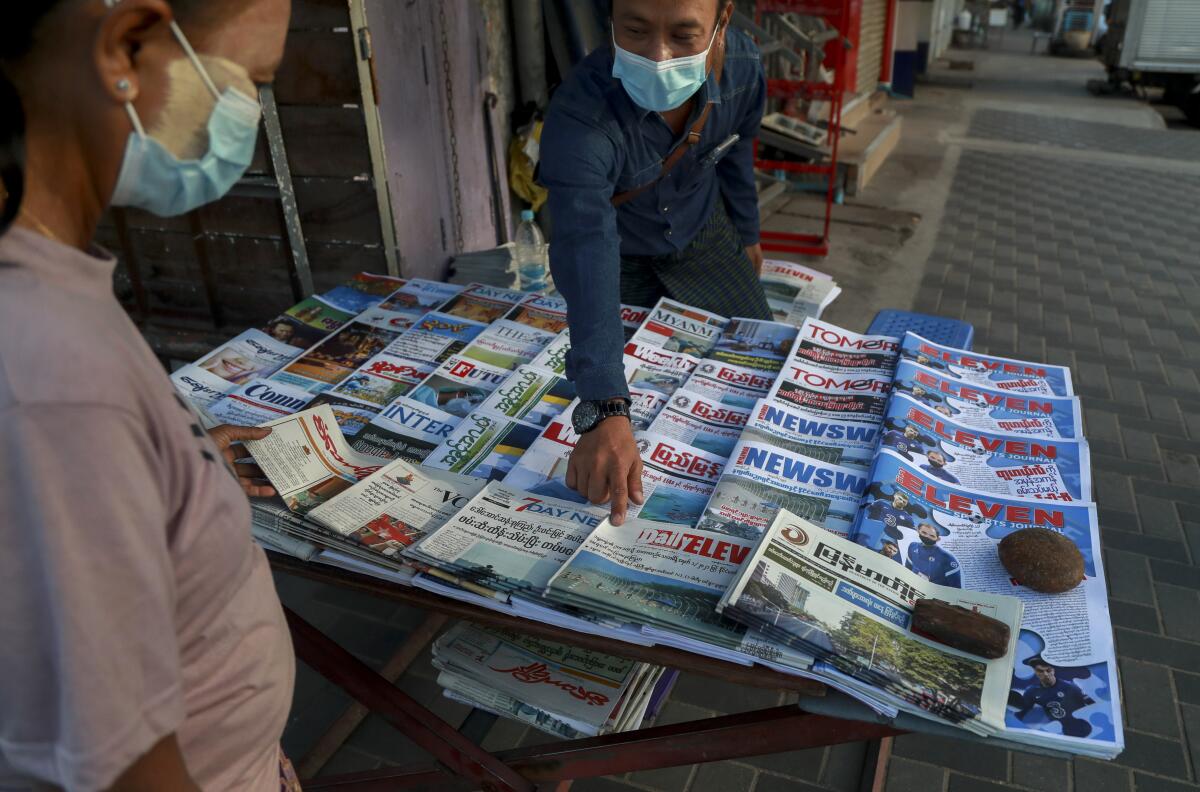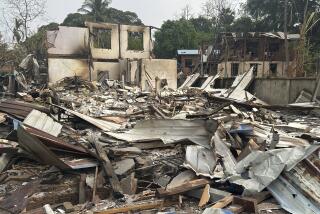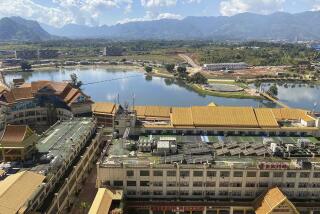Myanmar, Burma and why the different names matter

- Share via
This week, the military upended years of quasi-democratic rule in Myanmar, with soldiers taking control of the country in a carefully orchestrated coup. The military said the seizure of power was necessary because the government had failed to act on unsubstantiated claims of voter fraud in November elections, which the party of the country’s de facto leader, Aung San Suu Kyi, won in a landslide. It claims the takeover was legal.
But where exactly did the coup happen? Was it in Myanmar, as the the country is officially called? Or was it in Burma, the name Washington continues to use?
The answer is complicated. Because when it comes to Myanmar, pretty much everything is political. Including language.
Why are there two names for one country?
For generations, the country was called Burma, after the dominant Burman ethnic group. But in 1989, one year after the ruling junta brutally suppressed a pro-democracy uprising, military leaders suddenly changed its name to Myanmar.
By then, Burma was an international pariah, desperate for any way to improve its image. Hoping for a sliver of international legitimacy, it said it was discarding a name handed down from its colonial past and to foster ethnic unity. The old name, officials said, excluded the country’s many ethnic minorities.
At home, though, it changed nothing. In the Burmese language, “Myanmar” is simply the more formal version of “Burma.” The country’s name was changed only in English.
It was linguistic sleight of hand. But few people were fooled. Much of the world showed defiance of the junta by refusing to use the new name.
When did things change?
A little over a decade ago, the country began a stumbling semi-democratic transition. The military retained extensive political power, but opposition leaders were freed from prison and house arrest, and elections were allowed. Longtime pro-democracy activist Suu Kyi became the country’s civilian leader.
Over the years, many countries and news outlets, including the Associated Press, had begun using the country’s official name. As repression eased and international opposition to the military became less vocal, “Myanmar” became increasingly common. Inside the country, opposition leaders made clear it didn’t matter much anymore.
Unlike most of the world, the U.S. government still officially uses “Burma.” But even Washington has mellowed its stance.
In 2012, during a visit to the country, then-President Obama used both “Burma” and “Myanmar.” An advisor to Myanmar’s president called that “very positive” and said it was an “acknowledgment of Myanmar’s government.”
What now?
Washington’s response to the coup seemed designed to highlight old criticisms, with both Secretary of State Antony J. Blinken and President Biden pointedly avoiding the country’s legal name.
“The United States removed sanctions on Burma over the past decade based on progress toward democracy,” Biden said in a statement. “The reversal of that progress will necessitate an immediate review of our sanction laws.”
Most other countries, though, continued to call it Myanmar.
More to Read
Sign up for Essential California
The most important California stories and recommendations in your inbox every morning.
You may occasionally receive promotional content from the Los Angeles Times.










